What it takes to be a versatile artist: Notes from Ayushmann Khurrana
In an exclusive conversation with Cosmopolitan India, our digital cover star, Ayushmann Khurrana talks about his latest release, ‘Dream Girl 2’, the art forms he loves and how it influences his choice of films.

He serves us progressive cinema on a platter, he can pull off a sari with as much flair as a shirt, and he brings original Indian flavour to all his movies. His presence—on-screen and off it—is almost poetic as he exudes warmth, kindness, and modesty in his words and vibes. There are many reasons to love Ayushmann Khurrana, who has been winning hearts with his work and his cutesy dimples (excuse us for the fangirl moment).
Khurrana’s film, Dream Girl 2, set in the small town of Mathura, is fresh out of the oven, and we couldn’t help but notice that from Bareilly to Mathura, Khurrana’s movies are often set in tiny, sometimes non-descript, but always full-of-character towns of India. Do these small-town, wholesome settings appeal more to him compared to the metros? “The real India dwells in smaller cities; 70 per cent of India’s population is non-metro. So, I think it’s important to tell real stories about the many issues prevalent in the country. Metros are the same world over, there's not much taboo in metros but there are a lot of taboos and many interesting stories in smaller towns,” Khurrana points out.

Geographical and cultural diversities lend depth to Indian cinema in terms of character arc, storyline, and nuances of the language—India, after all, has more than 100 spoken languages and dialects that run in thousands—and it is impressive to see an actor so malleable that he aces the accent of each region he represents. Khurrana has played the character of a young video cassette shop owner in Haridwar in Dum Laga Ke Haisha with as much conviction as he has depicted the role of a printing press owner in Bareilly Ki Barfi. How does he manage to switch between dialects with so much ease? “If you know the setting and the place, it's easier to improvise the dialect. I should be true to the milieu and to the language of that place or region. We normally have workshops and dialect coaches to help us get every tiny aspect correct because in India, every few kilometers you will see a change in the accent. It's very interesting to try to ape those dialects and be authentic to the region,” Khurrana explains.
Khurrana did theatre as well as a lot of non-fiction television and radio for several years in his life. “I have a background in theatre and an intrinsic love for music—it comes from my grandmother and trickled down to my father and then me. I had a wholesome experience as a theatre actor. We used to compose and sing our own songs and write our own scripts. We also wrote lyrics and poetry,” he shares.

Since he first got noticed on Channel V PopStars in 2002, Khurrana has owned every part and space he has played in, for he continues to learn, unlearn, and learn again. And it is evident from his art, which is both seamless and evolutionary. “Anchoring is like talking to the camera and acting is about ignoring it, and that was the one thing I had to unlearn. Since then it's only been learning.”
Khurrana continues to mesmerise us, even with his music. His latest single, Raatan Kaaliyan feels almost like an ode to his eclectic choice of films. “We somehow introduced soft Punjabi alternate music in Vicky Donor with Pani Da Rang and it feels like an extension of that. But Raatan Kaaliyan really marries the music and the video. There's a sense of nostalgia also because we shot it in Chandigarh, my home city. I'm a night person and am obsessed with nights, and thus, was born Raatan Kaaliyan,” Khurrana shares the inspiration behind his newest single.

“My music will always be a little off-centre and a little indie because that's the kind of music I consume and love. It won’t ever be completely hardcore commercial. However, I would love to do commercial cinema in future. For me, Dream Girl is a very commercial film. It's a slapstick; a very tier 2 - tier 3 town pandering comedy,” he adds, vouching for his love for off-beat music and openness to do commercial films.
Then how does he deal with failures or when he receives an underwhelming response? “If you're in love with the process, rejections don't bother you. I owe this learning to my background in theatre, where we learned to enjoy the process more than the outcome. The idea is to give your best, whether it's music or films, without worrying about how people will receive it.”
Khurrana has created an unfading legacy of films that serve as a mirror to society, representing a certain demographic and culture. And none of this is by chance. His aim is to give back to society through his art. “I think you can influence the masses only through your art, and films have great power to do so. I choose socially relevant subjects and do progressive cinema, and will continue to do so.”
Shoot credits: Photographer: Manasi Sawant (@manasisawant); Stylist: Edward Lalrempuia (@edwardlalrempuia); Cover Design: Mandeep Singh (@mandy_khokhar19); Editorial Coordinator: Shalini Kanojia (@shalinikanojia); Make-up: Sanjay Yadav (@makeupbysanjay); Hair: Javed Mohd (@mohdjaved); Fashion Assistants: Asu Longkumer (@asulkr), Yuthika Potnis (@yuthiccaa), Saumya Narang (@sincerely.saumya)
On Ayushmann Khurrana:
Look 1: Checked Cotton Suit, Itoh; Vest, Calvin Klein; Watch: G-SHOCK, GM-2100CB-3AD from the G-SHOCK metal covered Utility Series
Look 2: Crochet Shirt, Zara; Cargo Pants, Hop Head; Watch: GM-2100C-5ADR from the G-SHOCK metal covered Utility Series
Look 3: Co-ords, Bhaane; Watch: GM-2100CB-1ADR from the G-SHOCK metal covered Utility Series
more from Celebrity
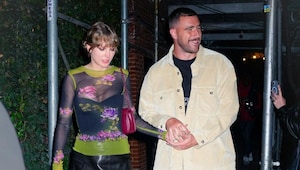
Every couple should fight (Taylor and Travis included)

Fun cosy socks you should invest in while winter is still around

How ‘The Housemaid’ movie stacks up to the book
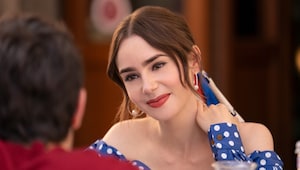
Emily is heading back to Paris for season six but is this where we say goodbye?
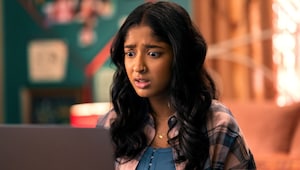
Keeping the camera on or off: What’s the right way to go about professional meetings?
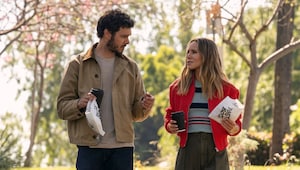
Choremance is the new dating trend making everyday errands feel romantic
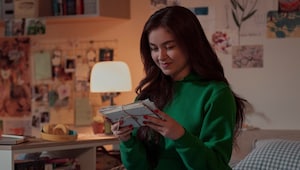
Why going offline is suddenly Gen Z’s favourite flex
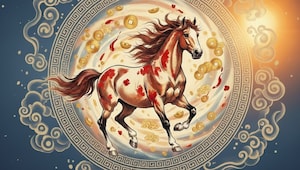
It's the Year of the Horse and here's what it means for you

If a man wears this, date him….

Vanishing acts or forever energy? Here’s how you can enter the new year with a happy heart
